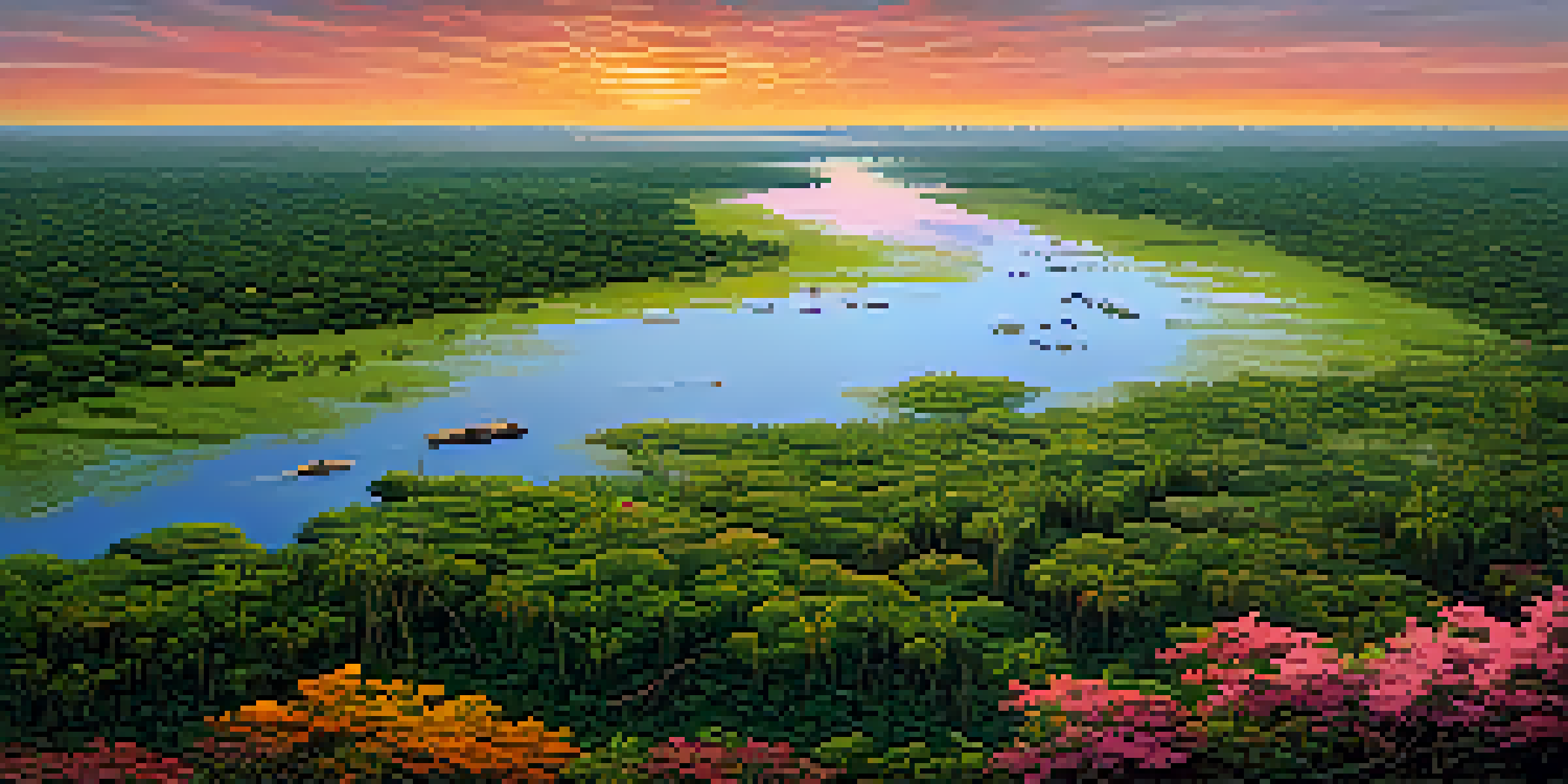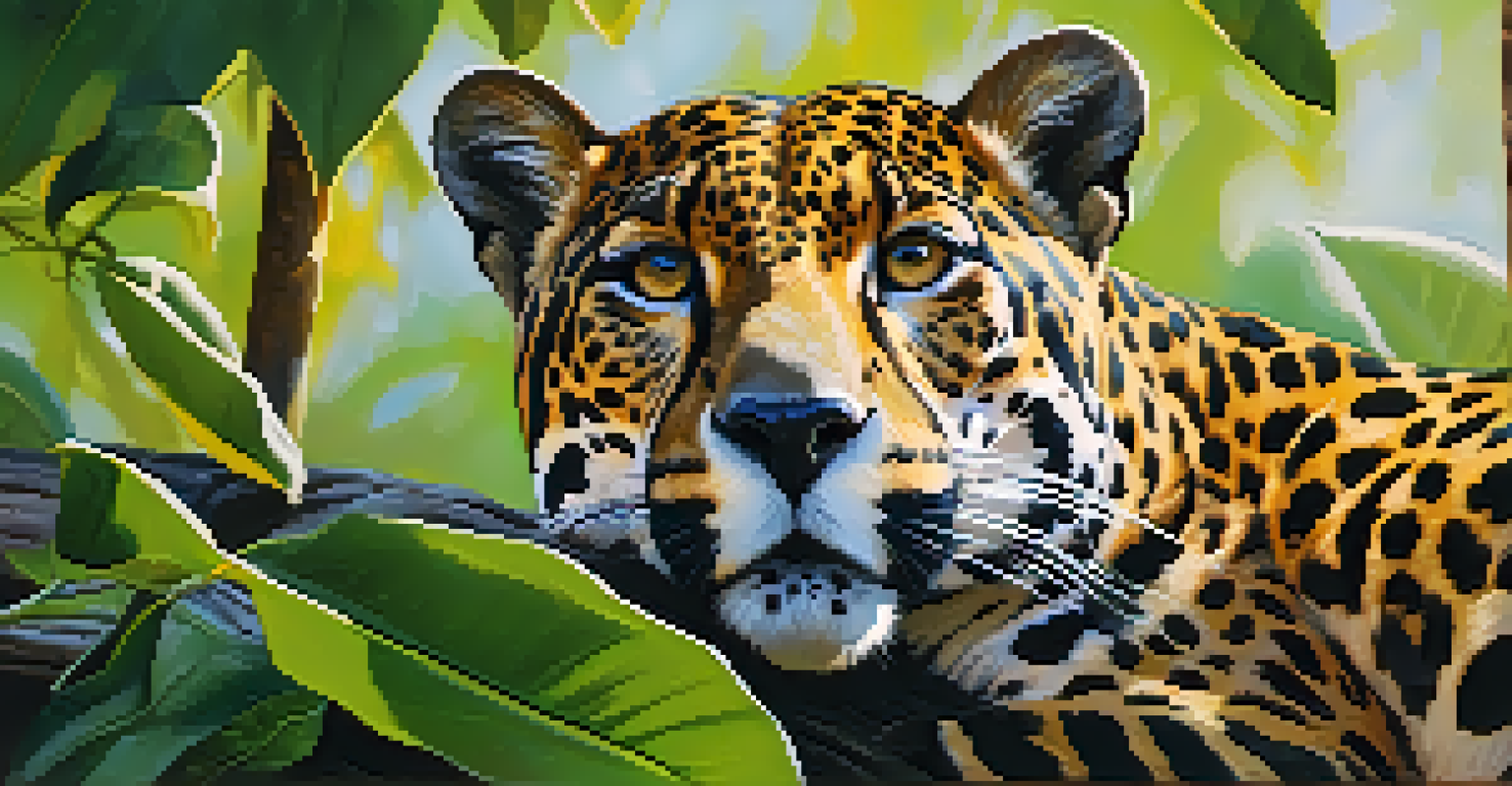Exploring the Pantanal: Conservation Efforts and Visitor Impact

Introduction to the Pantanal: A Biodiversity Hotspot
The Pantanal is the world's largest tropical wetland, sprawling across Brazil, Bolivia, and Paraguay. It's a vibrant ecosystem teeming with wildlife, from jaguars to caimans, making it a paradise for nature lovers. This unique environment not only supports a rich array of flora and fauna but also plays a crucial role in the health of our planet's climate and water systems.
In every walk with nature one receives far more than he seeks.
Visitors flock to the Pantanal to experience its breathtaking landscapes and diverse wildlife. However, the increasing popularity of this destination raises important questions about the impact of tourism on its delicate ecosystem. As we explore this balance, it’s essential to understand both the beauty of the Pantanal and the challenges it faces.
In this article, we'll delve into the conservation efforts underway in the Pantanal and examine how visitor behaviors can either support or hinder these initiatives. By understanding our role as travelers, we can contribute to preserving this incredible region for future generations.
The Unique Ecosystem of the Pantanal
The Pantanal is characterized by its seasonal flooding, which creates a mosaic of habitats that are home to a staggering variety of species. This dynamic environment supports around 12,000 species of plants and animals, making it one of the most biodiverse regions on Earth. The interplay between land and water not only sustains wildlife but also influences local communities that depend on its resources.

One of the most iconic animals in the Pantanal is the jaguar, known for its stunning beauty and strength. These majestic creatures are vital for maintaining the balance of the ecosystem, yet they face threats from habitat loss and poaching. Understanding the intricate relationships within this ecosystem helps highlight the importance of conservation efforts.
Biodiversity of the Pantanal
The Pantanal is one of the most biodiverse regions on Earth, home to around 12,000 species of plants and animals.
As we appreciate the Pantanal's wildlife, it's important to recognize how human activities can disrupt these delicate ecosystems. By learning about the unique features and challenges of the Pantanal, we can become more mindful visitors and advocates for its preservation.
Challenges Facing the Pantanal Ecosystem
Despite its beauty, the Pantanal faces significant environmental challenges, primarily due to deforestation, agriculture, and climate change. These factors contribute to habitat destruction and alter the natural flooding cycles vital for many species. As the landscape changes, the delicate balance of life within the Pantanal is increasingly threatened.
The greatest threat to our planet is the belief that someone else will save it.
Agricultural expansion, particularly for cattle ranching and soy production, has had a profound impact on the region. This not only leads to habitat loss but also increases pollution in the waterways, affecting both wildlife and local communities. It’s a stark reminder that economic growth can come with unintended consequences for the environment.
Addressing these challenges requires collaborative efforts from governments, NGOs, and local communities. By understanding the pressures the Pantanal faces, we can better support initiatives aimed at conservation and sustainable practices that protect this incredible ecosystem.
Conservation Initiatives in the Pantanal
Numerous conservation initiatives are underway in the Pantanal, aimed at preserving its unique biodiversity and restoring its ecosystems. These efforts range from the establishment of protected areas to community-based conservation programs that empower locals to sustainably manage their resources. Engagement of local communities is crucial, as they often serve as the first line of defense against environmental degradation.
Organizations such as the World Wildlife Fund (WWF) and local NGOs work tirelessly to promote conservation and educate visitors about responsible tourism practices. Their efforts include habitat restoration projects and wildlife monitoring, which help ensure the long-term health of the Pantanal. Support for these initiatives can make a significant difference in the fight against habitat loss.
Challenges to Ecosystem Health
Deforestation, agriculture, and climate change threaten the delicate balance of life within the Pantanal.
By participating in eco-friendly tours and supporting local conservation projects, visitors can play a vital role in preserving the Pantanal. This connection between conservation and tourism is key to ensuring that the region remains a thriving habitat for generations to come.
The Role of Eco-Tourism in Conservation
Eco-tourism has emerged as a powerful tool for conservation in the Pantanal, providing both economic benefits and educational opportunities. By promoting responsible travel practices, eco-tourism encourages visitors to appreciate the natural beauty of the region while contributing to its preservation. This approach helps create a sustainable model that benefits both the environment and local communities.
Visitors are increasingly seeking authentic experiences that connect them to nature, and the Pantanal offers an unparalleled opportunity for this. Guided tours led by knowledgeable locals can enhance the travel experience while fostering a deeper understanding of the region's ecological significance. Such experiences often inspire a commitment to conservation that extends beyond the trip.
Supporting eco-tourism not only helps protect the Pantanal but also raises awareness about the importance of preserving similar ecosystems worldwide. By choosing eco-friendly options, travelers can make a positive impact, ensuring that this unique environment continues to thrive.
Visitor Impact: Positive and Negative Effects
Every visitor to the Pantanal leaves an imprint, whether positive or negative. Responsible tourism can lead to increased funding for conservation efforts and encourage local communities to protect their natural resources. However, if not managed carefully, the influx of tourists can lead to habitat degradation and disturb local wildlife, highlighting the need for sustainable practices.
Visitors can positively impact the Pantanal by respecting wildlife, staying on designated paths, and minimizing waste. Engaging in guided tours led by conservation-minded operators can also enhance the visitor experience while promoting responsible practices. Understanding the delicate balance of this ecosystem allows travelers to enjoy its wonders without compromising its integrity.
Role of Eco-Tourism in Conservation
Eco-tourism offers a sustainable approach that benefits both the environment and local communities while promoting conservation efforts.
Conversely, overcrowding and pollution can harm the environment, leading to a decline in biodiversity and habitat quality. It's crucial for travelers to be aware of their actions and make informed choices that support conservation, ensuring that the Pantanal remains a thriving destination for years to come.
How You Can Help: Tips for Responsible Visiting
As a visitor to the Pantanal, there are many ways you can contribute to conservation efforts while enjoying the beauty of the region. Start by choosing eco-friendly accommodations and tour operators that prioritize sustainability. Consider participating in volunteer opportunities that support local conservation projects, giving you a chance to make a tangible difference during your visit.
Educate yourself about the local wildlife and ecosystems before your trip. Understanding the importance of the Pantanal's biodiversity can enhance your appreciation and foster a sense of responsibility towards protecting it. Share your experiences and knowledge with others, encouraging them to adopt responsible travel practices, too.

Lastly, be mindful of your actions while in the Pantanal. Follow guidelines set by tour operators, minimize noise pollution, and avoid littering. By being a conscious traveler, you not only enhance your experience but also help preserve this incredible ecosystem for future generations to explore.